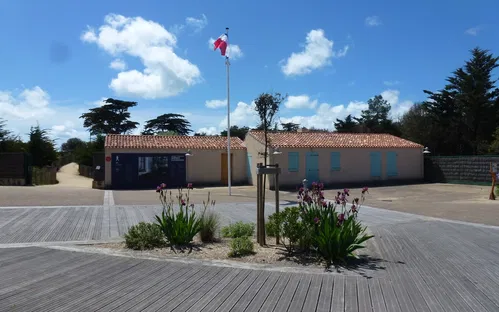House of Georges Clemenceau and its collection
The House and Gardens of Georges Clemenceau is a country house located in Saint-Vincent-sur-Jard in Vendée, on the edge of the Atlantic Ocean. This house was owned by the politician Georges Clemenceau during the last ten years of his life, from 1919 to 1929. It is a traditional Vendéenne longhouse, situated on a dune facing the ocean, painted white with turquoise shutters, and a Roman tile roof. The house and its gardens have been classified as historical monuments since July 10, 1970, and have been labeled 'Maisons des Illustres' since 2011.
Preservation of the House-Museum and Gardens
The house-museum and its gardens have been preserved in their original state since Clemenceau's death. Visitors can see his original furniture, many personal items, and numerous diplomatic gifts, particularly reflecting his interest in Japan. These include small shrubs in his garden, a mast displaying koi noboris, kakemonos, two small bronze foxes at the entrance to his bedroom, Japanese prints, and wall-mounted bouquet holders in the two guest rooms.
The Impressionist Garden of Georges Clemenceau
Georges Clemenceau created a wild garden behind his house in the 'impressionist' spirit of his great friend, painter Claude Monet. The garden, with its 7000 flowers, is made up of freely growing plants, perennials, annuals, and shrubs arranged in juxtaposed color patches and protected by windbreak hedges. The garden was restored by the state between November 2005 and May 2006 and was inaugurated by Georges Clemenceau's great-grandson.
History & Anthropology Art & Design Historic house Garden & Park Person & Artist








